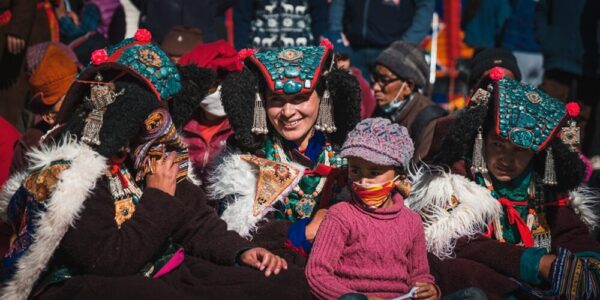CCMB Scientists Illuminate Ladakh’s Genetic History
Kargil, Jan 19: Ladakh, renowned as the coldest desert and often referred to as the “land of high passes,” situated at an elevation of 3000-3500 meters above sea level. In a pioneering collaboration, scientists from the Centre for Cellular and Molecular Biology (CCMB) in Hyderabad, and the Birbal Sahni Institute of Palaeosciences (BSIP) in Lucknow, have conducted a comprehensive DNA study to unravel the intricate genetic history of Ladakh’s diverse population.
The study, spearheaded by Dr. Kumarasamy Thangaraj, JC Bose Fellow at CCMB, and Dr. Niraj Rai, Senior Scientist at BSIP, delved into the DNA analysis of 108 individuals representing three major Ladakhi communities: Brokpa, Changpa, and Monpa.
By comparing the Ladakh populations’ DNA sequences with both modern and ancient DNA samples from South Asia, East Asia, Tibet, and West Eurasia, the researchers validated their findings through meticulous cross-referencing with archaeological and historical records. The outcomes of this groundbreaking research have been recently published in the journal Mitochondrion.
* Click to Follow Voice of Ladakh on WhatsApp *
Dr. Thangaraj highlighted key findings, stating, “The maternal genetic lineages of the Brokpa, Changpa, and Monpa populations of Ladakh are closely linked to lineages commonly found in South Asia, East Asia, and Tibet. Interestingly, our study revealed a shared maternal genetic ancestor between Changpa and Monpa, while Brokpa exhibited distinct characteristics and experienced a population decline approximately 1000-2000 years ago. Furthermore, the genetic affinity of Changpa and Monpa with Tibeto-Burman speakers was observed.”
Dr. Niraj Rai emphasized that the research strongly suggests the Brokpa as the most ancient settlers in the region, boasting a remarkably deep mitochondrial lineage dating back to the Neolithic period.
The findings from this study conclusively point towards demographic changes and population transitions in Ladakh, echoing migrations from East Asia, Tibet, South Asia, and more recently, West Eurasia, as elucidated by Prof. Mahesh G. Thakkar, Director of BSIP.
Dr. Vinay K. Nandicoori, Director of CCMB, underscored the significance of the study in confirming and supporting the movement of people through the Trans-Himalayan corridor and the Silk Route. Noteworthy institutions contributing to this study include the Archaeological Survey of India in Dehradun and Mini Circle Leh, UT Ladakh, Panjab University, Chandigarh, and AcSIR, Ghaziabad.
3 Comments
Leave a Reply

Interesting Nice read. Wishing all the best on more such researches.
A great insight!!
Great finding sir,